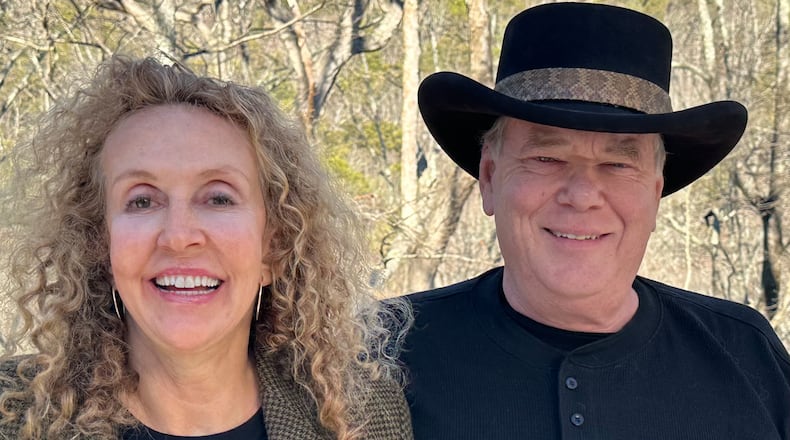A two-decade relationship with woodworking and a move to Georgia from California have brought Ben Balzer the visibility he needed to bring his hand-turned bowls to new audiences.
“The mission of the whole company is to be the centerpiece of the world’s finest tables,” he told the AJC.
In the media
Positive media remains an undeniable boost for ambitious entrepreneurs. Balzer saw that type of exposure pay off recently when his Talking Wood Studio came out as the winner in the home category of the Garden & Gun Mad in the South contest. A full-page story and photo of his work in a recent edition of the magazine’s nationally distributed print product topped things off.
Being recognized among a group of talented artisans came as a bit of a surprise Balzer said.
“They did really good work, so it was good competition,” he said. “I was glad to win.”
‘Ready to do this’
Credit: Contributed by Talking Wood Studios
Credit: Contributed by Talking Wood Studios
This isn’t Balzer’s first foray into woodworking ― he began crafting walking sticks about 20 years ago. His wife, Olivia Dillan, helps with marketing his current products. It’s not the couple’s first entrepreneurial endeavor, either. They owned Spice Ace, a San Francisco-based, internationally renowned spice shop, which they closed in 2019.
Balzer began the bowl business in 2017 when they bought property here. It was a natural shift.
“I wanted to do things that were only one piece of wood, so I chose to make bowls as the business,” he said. “I’ve been collecting wood for years. Probably, I have wood that I haven’t turned that’s 25 years old. I’ve been ready to do this for a long time.”
The bowls often originate from wood native to Georgia. Black walnut, magnolia, tulip poplar, London plane: These woods yield the irregularities and interesting grain patterns that make the bowls part art as they fulfill their function as tableware.
And it seems they’re especially appealing to buyers in this region.
“I think, in many ways, Southerners, unlike the West Coast, they’re really into beautiful crafts and things that are of nature and are native to the area,” Dillan said.
The process
Credit: Contributed by Talking Wood Studios
Credit: Contributed by Talking Wood Studios
When the couple built their house in Waleska, they installed a studio underneath. It’s fully outfitted for Balzer to practice his craft with tools like jet lathes, polishers and buffers. He works with the grain to sculpt the outside of the bowls and then finds a corresponding shape for the inside before flattening the bottom so the creations can sit flush with a supporting surface.
“The challenges are when you find surprises from nature, like holes in the wood or knots. Sometimes you get tearout or things that you don’t expect,” he said, referencing wood that breaks away instead of conforming to a woodworker’s manipulations. “I can usually fix them. I just modify the design a bit and keep going.”
The couple travels a lot, so production takes place around those trips.
“When I’m home for a whole month, I produce about 20 bowls,” Balzer said. “We love to travel throughout the country … We’re gone a significant part of the year.”
A brisk business
Credit: Contributed by Talking Wood Studios
Credit: Contributed by Talking Wood Studios
Keeping that production moving is likely in his best interests: Business has been brisk.
The Garden & Gun story has “probably been the most successful outside force that we’ve ever had,” Dillan said. “It really brought people to our website — people that really appreciate quality and art and things that are made in the South.”
The story was posted online, but its appearance in print brought the most attention, she said.
“We had an incredible amount of sales and visibility — more than we’ve ever had before,” she said. “We had one customer who bought, I think, 13 bowls and gave them away at Christmas.”
Before the story, the couple had done some posting on social platforms such as Facebook, Instagram and Pinterest.
“We also just had a lot of word of mouth — people that knew the work of Ben who are friends of ours throughout the U.S.,” Dillan said. “But then, I think that social media in some ways has faded.”
She’s still actively marketing, but her next move for fulfilling the plan to get the bowls into those fine homes includes simple networking.
“It’s more opportunistic marketing than a big strategic plan, but I want to go out and look for interior designers and send them proactive mail,” she said.
And, of course, the bowls, with their rustic beauty, hold their own magnetic attraction.
“What we’re after is that the bowl becomes the conversation starter,” Balzer said. “Have you ever been in a place where people are gathering around, like maybe a business meeting, and you’re gathering around a table or something? You’re having drinks, and it’s a little awkward, and then you see that cool thing sitting in the middle of the table you could talk about.”
About the Author
The Latest
Featured





